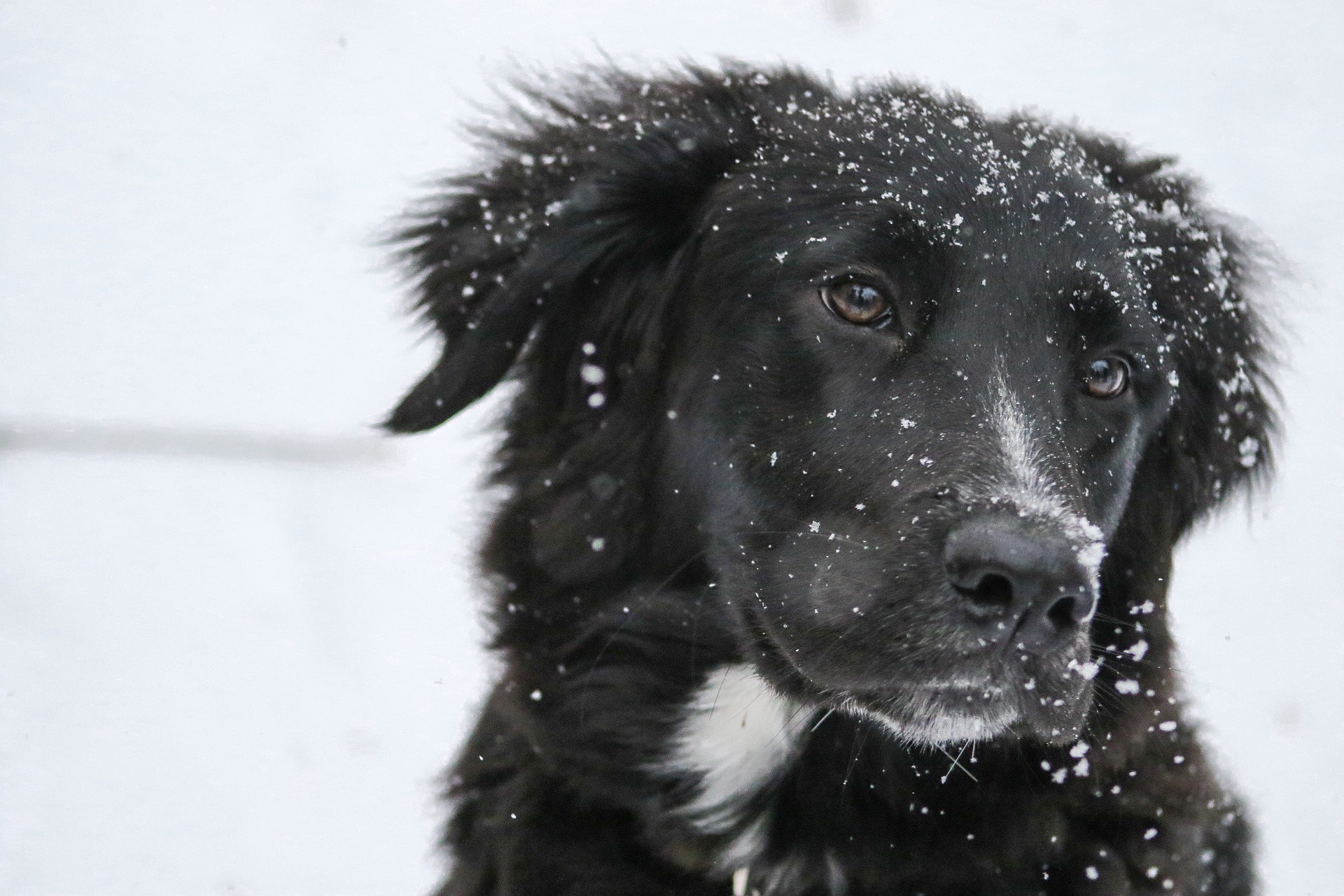
Long dog walks on a crisp winter’s morning can be one of the best things about dog ownership. However, soggy, muddy paws and dark, dank evenings can also make it a trying time indeed. So, see our top tips for making winter work for you and your pooch.
The need for exercise
To keep our dogs healthy in both mind and body, the requirement for winter walking is an undeniable one. Obesity can lead to conditions such as diabetes, heart disease and joint disorders, and it’s true that it’s easier to keep the weight off, than dieting away the winter pounds come spring time. Although arthritic dogs find their condition worsened by cold weather, ceasing exercise altogether will only make their joints seize, worsening the condition overall. A little, gentle exercise is likely to be beneficial. Hydrotherapy in warm pools can help arthritic dogs massively, especially in winter. So, find out where your nearest canine hydro pool is and for more advice on exercising arthritic pets safely, your vet will be happy to advise.
It’s easy to see why the body requires exercise, so what about the mind? We humans, go out to work, go shopping and generally experience life outside of our four walls all year round. If dogs don’t have interesting experiences daily, they are likely to become bored, depressed and potentially destructive as well. So then, how can we make winter walks fun whatever the weather?
There’s no such thing as bad weather, just bad clothing
So maybe this isn’t quite your mantra and you’d rather snuggle up in a duvet on those dark winter evenings than brave the elements walking the dog. Perhaps even your dog gets to the door and squints their eyes against the rain. Alas, it’s a necessary evil, but rest assured, good waterproof getup can really make the experience a whole lot more pleasant. A waterproof coat, a pair of sturdy wellies and even waterproof trousers can make a wet weather walk surprisingly enjoyable. It’s not just you though! Think about your dog and what they need to enjoy the outdoors during this time of year. Sighthounds (e.g. greyhounds) and other dogs with a little less natural coverage will likely require not only a waterproof layer but some warmth to a jacket as well. Older dogs will often benefit from this too.
See and be seen!
If you work full time, then during the week you’ll probably be walking your dog in the dark at both ends of the day. It is really important that you and your dog are seen by cars and bicycles and a fluorescent vest could be a life-saving investment for you. Likewise, there are a whole range of dog coats and collars out there designed to illuminate your dog in the dark with LED lighting, something we strongly recommend. Not only for safety, but if you have a safe area to let them roam free, you will always be able to see where they are and what they’re up to. Invest in a head torch too, apart from visibility to cars, your dog will also be able to see you and it might prevent trips and falls.
Recall really matters, prepare now!
If you plan to unleash your canine beast in the dark this winter, why not refresh your dog’s recall skills and give yourself renewed confidence that they’ll return. Positive reinforcement is the way forward on this topic, rewarding good behaviour with treats and fuss while ignoring the bad. If your pooch isn’t best known for their recall skills, investing in some professional help can make a valuable difference which will serve you for life (or that of your dogs!). The rule on letting dogs off the lead? If they won’t come, they don’t go!
Make walkies fun
If your dog is a ball fiend, there’s no reason that the dark should scupper this fun. There are a plethora of flashing dog balls that your pooch will enjoy to chase. In fact, those with colourful lights will make the game all the more fun for everyone, as they can be quite a spectacle to watch too.
Handy health tips
Be mindful that excessively long periods out in the cold can be unpleasant and detrimental to your dog’s health. Remember that snow and ice can be troublesome for those of us who don’t wear shoes as frostbite takes hold. So limit the time your dog spends in these conditions or consider buying dog boots if it can’t be avoided. That’s not to say they can’t enjoy a good game of catch the snow ball!
With wetter, softer terrain providing less abrasive action in winter, you might find that your dog’s nails grow longer than usual. Get a good quality pair of nail clippers and ask your vets for a ‘how to’ in nail care.
Keep a clean bowl of water handy post-walk to wash your dog’s feet. Grit salt on the roads can make your dog’s pads dry, cracked and sore. Washing it off can help hugely.
Winter survival kit
We have compiled a handy kit list to make you and your dog’s life easier and more enjoyable this winter. So be winter ready, preparation is key!
Florescent clothing for people and pooches
LED lit collar
Dog jacket/s
Flashing dog ball
Dog towels
Nail clippers
Dog boots (for ice and snow)

